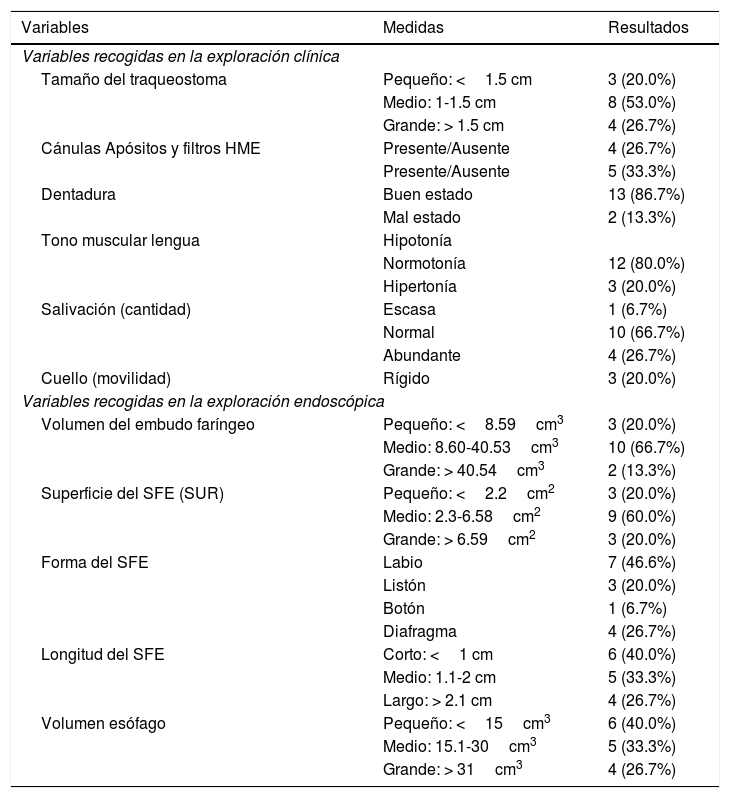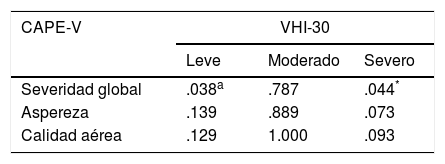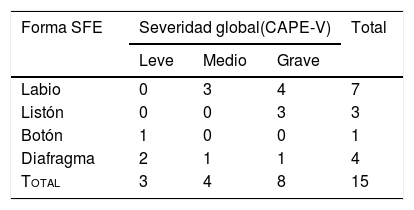La laringectomía total ocasiona un cambio morfológico trascendente en el aparato vocal, que altera totalmente el mecanismo fisiológico de la voz.
ObjetivoDescribir aspectos claves de la morfología del aparato vocal de las personas que utilizan la voz erigmofónica para su comunicación.
Material y métodoEstudio prospectivo de 15 pacientes laringectomizados que utilizan voz erigmofónica en los que se aplicaron los test VHI-30, CAPE-V y una exploración clínica y endoscópica, destacando los aspectos morfológicos que podrían influir en la voz.
ResultadosEl VHI-30 revela que perciben su voz como limitación leve y moderada. El CAPE-V indica una afectación media y grave. El VHI-30 (grados leve y moderado) se relaciona significativamente con la severidad global del CAPE-V. En la exploración clínica de la cavidad oral y el traqueostoma no se observan alteraciones que se relacionen con la valoración del CAPE-V. La exploración endoscópica muestra tendencias entre volúmenes y áreas de la cavidad faríngea y del esófago con el CAPE-V, pero sin llegar a valores significativos. Las formas de botón y diafragma del segmento faringoesofágico exhiben una tendencia similar.
ConclusionesLa calidad de la voz erigmofónica percibida por el explorador dependería, en cierta medida, de las características anatómicas del nuevo aparato vocal del laringectomizado.
Total laryngectomy causes a morphological change in the vocal apparatus, which totally alters the physiological mechanism of the voice.
AimThe objective of this article is to describe key aspects of the vocal apparatus morphology of patients who use the esophageal voice to communicate.
Material and methodProspective study of 15 patients with esophageal voice in which the VHI-30, CAPE-V and a clinical and endoscopic exploration were performed, highlighting the morphological aspects that could influence the voice.
ResultsThe VHI-30 reveals that they perceive their voice as a mild and moderate limitation. The CAPE-V indicates a medium and severe affectation. Both tests are significantly related in the mild and severe grades of VHI with the global severity of CAPE-V. The clinical exploration of the oral cavity and tracheostoma doesn’t show that its variables present a trend with CAPE-V. Endoscopic exploration shows trends in the relationship between volumes and areas of the pharyngeal cavity and esophagus with the CAPE-V, but without reaching significant values. The button and diaphragm shapes of the pharyngoesophageal segment exhibit the same tendency.
ConclusionsThe variables studied indicate that the quality of the esophageal voice would depend, to some extent, on the anatomical characteristics of the new laryngectomized vocal apparatus.
Artículo
Comprando el artículo el PDF del mismo podrá ser descargado
Precio 19,34 €
Comprar ahora
















